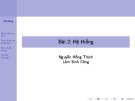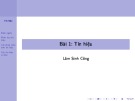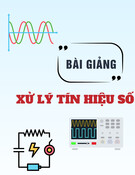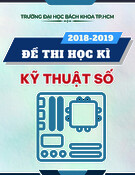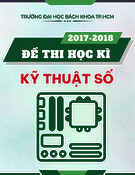
ISSN: 2615-9740
JOURNAL OF TECHNICAL EDUCATION SCIENCE
Ho Chi Minh City University of Technology and Education
Website: https://jte.edu.vn
Email: jte@hcmute.edu.vn
JTE, Volume 19, Special Issue 02, 2024
45
Performance Analysis for Hybrid TPSR Energy Harvesting Enabled in Multi-
Source Half-Duplex Relaying Network over Rayleigh Fading Channel
Tan N. Nguyen1, Nhat-Tien Nguyen2*
1Ton Duc Thang University, Ho Chi Minh City, Vietnam
2Saigon University (SGU), Ho Chi Minh City, Vietnam
*Corresponding author. Email: tien.nn@sgu.edu.vn
ARTICLE INFO
ABSTRACT
Received:
11/10/2023
This paper investigates the system performance of hybrid time-power
switching based relaying (TPSR) energy harvesting enabled in the multi-
source half-duplex relaying network over the Rayleigh fading channel. The
outage probability (OP) of the proposed system model with implementing
maximal ratio combining (MRC) and selection combination (SC) technique
at the receiver is presented and analyzed. The impact of main system
parameters, such as transmit signal to noise ratio (SNR), time fraction factor,
power fraction factor, and number of sources, on the system performance is
analyzed. The results indicate that the performance of the system in the case
of MRC is more improved than in the SC case. It shows the benefit of MRC
for optimizing SNR at the receiver. Furthermore, we recognize that there
exists an optimal value of time fraction factors where the system performance
obtains the best performance. Finally, the correctness of the analytical
formulation is verified by Monte Carlo simulation.
Revised:
11/11/2023
Accepted:
28/11/2023
Published:
28/04/2024
KEYWORDS
Amplify-and-forward;
Energy Harvesting;
Outage Probability;
Relaying network;
Half-duplex.
Doi: https://doi.org/10.54644/jte.2024.1480
Copyright © JTE. This is an open access article distributed under the terms and conditions of the Creative Commons Attribution-NonCommercial 4.0
International License which permits unrestricted use, distribution, and reproduction in any medium for non-commercial purpose, provided the original work is
properly cited.
1. Introduction
Energy harvesting (EH) is emerging as a potential technology for limited energy networks and
wireless devices. Harvesting energy from green sources in the surrounding environment and
transforming it into electrical energy for communication networks is a major area of research [1], [2].
Green energy sources in the wireless environment consist of solar, wind, thermal, mechanical vibrations,
radio frequency (RF) signals with information transmission or harvesting energy and can be considered
as prospective energy sources for sensor nodes [3], [4], [5]. In fifth generation (5G) and beyond
networks, EH contributes to reducing power consumption [6]. The concept of wireless power transfer
(WPT) has been proposed in [7], and simultaneous wireless information and power transfer (SWIPT)
has been suggested as a potential technique that contributed significantly to the development of RF
energy harvesting [8]. There are two types of receivers in the cooperative communication network that
are time-switching (TS) and power splitting (PS) techniques [9]. In the TS protocol, the EH node
changes in time between EH and information processing (IP), while in the PS method, the EH node
divides the received power for IP and EH.
Furthermore, the cooperative communication network with the relay node can help the source
transfer the information to the destination, which is the hot trend in the communication network [10]-
[15]. The authors in [10] considered the performance of multi-hop cognitive wireless sensor networks
(WSNs), the secondary source and relays that harvest energy from a power beacon to forward the
information. While in [11], the authors derived service time distribution, average waiting time of a
packet, queue stability criteria of the secondary user in a cognitive WPCN. Both the AF and DF relaying
protocols have been investigated with power splitting-based energy harvesting, and the authors in [12]
demonstrated that the advantages of DF. Static or mobile wireless networks are the rich green energy
sources for energy harvesting, the authors in [13] proposed that a harvester node collects the energy
generated by the coexisting wireless networks and then acts as a transmitter after the duration of harvest.
EH in a non-orthogonal multiple access (NOMA) network is considered in [14], where the relay using
TS protocol harvests energy from the RF source in the condition of imperfect information on the state












